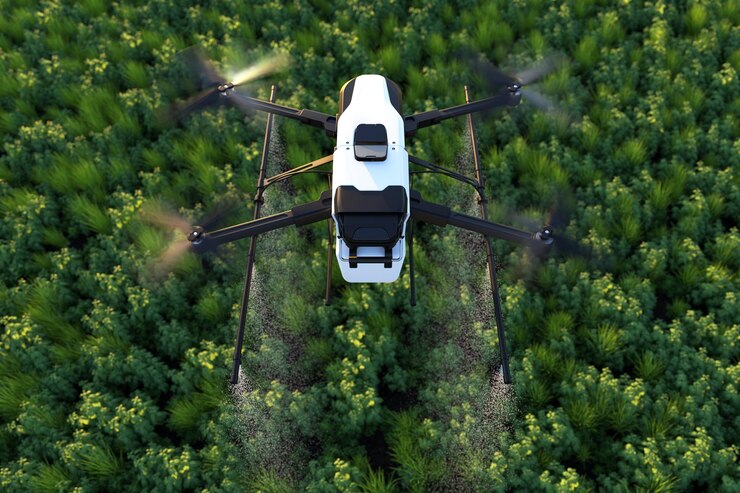Farming in Oklahoma embraces the cutting edge of technology, and agri spray drones are paving the way for modern, efficient practices. These drones have become vital tools for farmers, helping manage vast stretches of land with precision. They allow farmers to target areas that need attention without disturbing crops or wasting resources. But, like any technology, drones can sometimes face hiccups that can slow down operations. Understanding these malfunctions and knowing how to address them ensures that farmers can continue their work smoothly and efficiently.
When a drone suddenly falters mid-task, it can be frustrating. Common issues such as GPS signal loss, battery hiccups, and motor troubles can crop up, affecting drone efficiency. Tackling these problems quickly is essential for keeping farming operations running smoothly. In a state like Oklahoma, where the weather and terrain add their own set of challenges, knowing how to handle these issues can save both time and resources. Let’s dive into recognizing and solving these common drone malfunctions, so they’re nothing more than a temporary setback.
Recognizing Common Drone Malfunctions
When using agri spray drones, being able to spot potential issues early is a real game-changer. Here are some common drone malfunctions that farmers in Oklahoma often encounter:
1. GPS Signal Loss: This can happen when flying in areas with dense trees or buildings. It’s typically noticeable when the drone starts to drift off course or loses connection.
2. Battery Failures: Signs of battery trouble include the drone no longer holding a charge or shutting down unexpectedly. Sometimes, they can even swell or overheat.
3. Motor Problems: These might occur when the drone struggles to take off or maintain stable flight. Odd noises or vibrations are early indicators.
Understanding these challenges allows farmers to act before they escalate. Early detection means less downtime and more time doing what drones do best—keeping fields productive and efficiently managed. Investing a bit of time in regular checks and maintenance can nip these issues in the bud, preventing them from becoming bigger headaches down the line.
Troubleshooting GPS Signal Loss
GPS signal loss can be a real headache for those using agri spray drones in Oklahoma’s varied landscapes. This problem can occur when drones fly near dense forests, tall buildings, or even during bad weather. When signals are weak, drones might drift or lose connection, disrupting operations.
To tackle these issues, it’s important to first ensure that the drone’s GPS firmware is up-to-date. Regular updates can fix bugs that might affect the signal. Another helpful tip is to check the surrounding environment before flying. Open areas with a clear sky view are ideal.
If a signal loss does occur, a simple restart of the drone can often restore connections. It’s a good idea to recalibrate the GPS settings regularly to ensure accuracy. These steps can improve performance and reduce downtime, keeping the drone on track and tasks running smoothly.
Managing Battery Failures
Battery problems can quickly ground an operation and cause frustration. These failures often show up when drones don’t hold a charge or when they shut down unexpectedly. Extreme temperatures in Oklahoma can also lead to battery issues, making careful management crucial for reliability.
To keep batteries in check, always store them at room temperature and avoid leaving the drone or spare batteries in direct sunlight. Before flying, inspect them for any sign of swelling or overheating. It’s a good plan to maintain a rotation schedule, using and recharging each battery regularly to avoid overuse.
Keep a checklist handy that includes:
- Inspecting for physical damage
- Monitoring charge levels before and after use
- Ensuring contacts are clean and free of debris
These simple practices can extend battery life and maintain their reliability in the field.
Preventing And Fixing Motor Issues
Motor issues are another common snag that can affect drone performance. They often arise from debris build-up, worn-out components, or moisture exposure due to unexpected weather changes. A struggling drone that makes odd noises or doesn’t fly smoothly might have motor problems.
Regular maintenance is key to avoiding these issues. Dust and debris should be carefully removed after every flight. If a drone operates frequently in wet or muddy fields, extra attention may be needed to clean the motors.
It’s wise to incorporate a motor check into routine drone maintenance. Check for wear and tear, especially if the drone shows any difficulty in take-off or consistent flight. Catching these signs early can prevent bigger issues and ensure that the drone remains a reliable partner in farming.
Wrap-Up: Staying on Top of Drone Maintenance
Keeping drones in prime condition requires routine checks and a little creativity. Farmers in Oklahoma, faced with unique environmental challenges, can benefit greatly from paying close attention to these maintenance tips. Early identification of issues like GPS, battery, and motor malfunctions can keep operations smooth and fields productive.
By building a habit of regular maintenance and staying mindful of the signs, farmers can maximize the value of their agri spray drones. This preparedness not only enhances farming efficiency but also extends the lifespan of the equipment, making every flight count.
To ensure your farming operations stay efficient and trouble-free, consider exploring the benefits of using advanced agri spray drones. Osprey Agri Drones is committed to helping you maintain seamless operations and enhance productivity in the fields. Keep your equipment in top shape, and let us support you in optimizing your farming practices.


